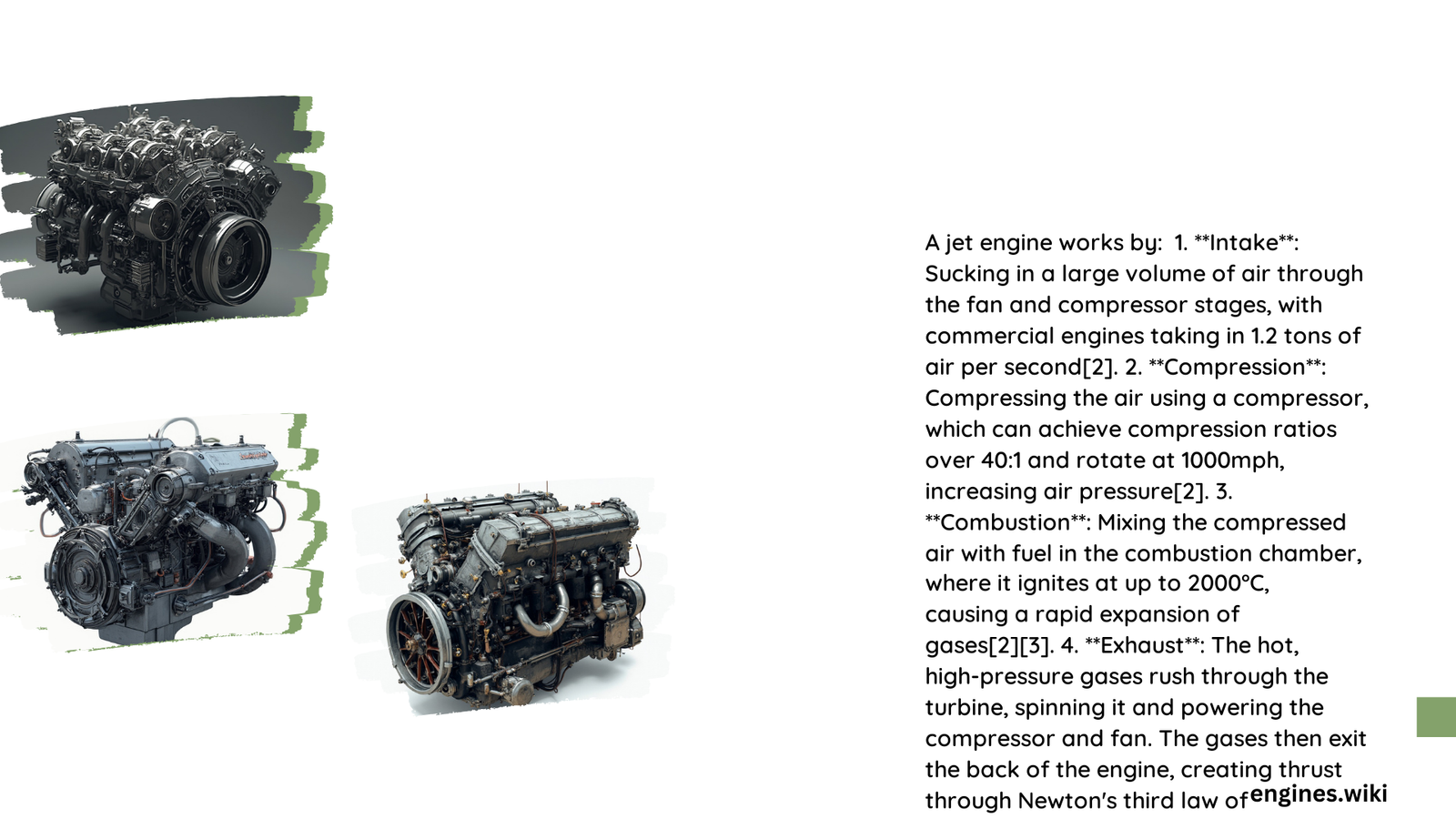Jet engines are complex machines that power modern aviation. They work by drawing in air, compressing it, mixing it with fuel, igniting the mixture, and expelling hot gases to create thrust. This process involves several key components working together in a carefully orchestrated sequence. Understanding how a jet engine works can seem daunting, but this guide breaks it down into simple terms for beginners.
What Are the Main Parts of a Jet Engine?
A jet engine consists of five main components:
- Air Intake
- Compressor
- Combustion Chamber
- Turbine
- Exhaust Nozzle
Each part plays a crucial role in the engine’s operation.
How Does Air Enter the Jet Engine?

The journey begins at the air intake. This component is designed to:
- Funnel large volumes of air into the engine
- Ensure smooth airflow at various speeds
- Direct air towards the compressor
The intake’s shape and design are critical for efficient engine operation.
What Happens in the Compressor?
The compressor is where things start to get interesting. Here’s what it does:
- Squeezes incoming air to increase its pressure
- Uses a series of rotating blades to compress the air
- Can increase air pressure up to 40 times its original value
Fun fact: At full power, compressor blades can spin at speeds up to 1000 mph!
How Does Fuel Enter the Picture?
After compression, the air enters the combustion chamber. This is where:
- Fuel is injected and mixed with the compressed air
- The mixture is ignited, creating extremely hot gases
- Temperatures can reach up to 2000°C (3632°F)
The fuel-to-air ratio is typically around 1:50, much leaner than in car engines.
What Role Does the Turbine Play?
The turbine is like the engine’s powerhouse. It:
- Extracts energy from the hot gases
- Uses this energy to drive the compressor
- Can rotate thousands of times per minute
Turbine blades must withstand temperatures between 850°C and 1700°C (1562°F to 3092°F).
How Does the Exhaust Create Thrust?
The final step occurs in the exhaust nozzle:
- Hot gases exit at high velocity
- This high-speed exhaust creates forward thrust
- The nozzle shape maximizes gas velocity and thrust
What Are Some Impressive Jet Engine Facts?
Here are some mind-blowing facts about jet engines:
| Fact | Figure |
|---|---|
| Fuel consumption during cruise | 1,000 to 2,000 pounds per hour |
| Maximum combustion temperature | Up to 2000°C (3632°F) |
| Thrust output (commercial engines) | 20,000 to over 100,000 pounds |
| Air intake at full power | Approximately 2600 lb (1200 kg) per second |
How Do Engineers Overcome Jet Engine Challenges?
Jet engines face several challenges:
- Efficiency: Balancing fuel-to-air ratios and managing high temperatures
- Compressor stall: Operating close to surge conditions for maximum efficiency
- Maintenance: Dealing with high-temperature and high-pressure environments
- Material limitations: Developing advanced materials to withstand extreme conditions
Engineers continuously work on innovative solutions to address these challenges.
What Makes Jet Engines Different from Car Engines?
Jet engines differ from car engines in several ways:
- Continuous combustion vs. intermittent combustion
- Much higher operating temperatures
- Greater air intake and compression
- Use of turbines instead of pistons
- Significantly higher power output
How Has Jet Engine Technology Evolved?
Jet engine technology has come a long way:
- Early designs: Simple turbojet engines
- Modern designs: High-bypass turbofan engines for improved efficiency
- Future concepts: Hybrid electric and hydrogen-powered engines
Each generation brings improvements in efficiency, power, and environmental impact.
What’s the Future of Jet Engine Technology?
The future of jet engines looks exciting:
- More efficient designs to reduce fuel consumption
- Use of sustainable aviation fuels
- Integration of electric propulsion systems
- Advanced materials for better heat resistance
- Smarter engine health monitoring systems
These advancements aim to make air travel more sustainable and cost-effective.
By understanding these basics, you now have a good grasp of how a jet engine works. From air intake to thrust generation, each component plays a vital role in powering modern aircraft. As technology continues to advance, we can expect even more impressive developments in jet engine design and performance.
References:
1. Engines – NASA Glenn Research Center
2. How The Jet Engine Works – Stanford University
3. How The 4 Types Of Turbine Engines Work | Boldmethod
